Asian hornet: a major predator for honey bees
The Asian hornet (Vespa velutina, not to be confused with its European cousin Vespa crabro, or with the giant hornet Vespa mandarinia) has become within just a few years, the second main predator of western Europe honey bees. While Vespa velutina is smaller than Vespa Mandarinia, it is a major threat to bee colonies, devastating entire apiaries. And finally leaving the beekeepers desperate.
Vespa velutina first arrived in Europe 2004 in the southwestern region of France and has since spread to the entire French territory and gradually entering its closest neighbors (Spain, Italy, Portugal, the UK, Belgium, Germany, Switzerland).
It has recently been spotted in the USA (Georgia), and is know there as the “yellow-legged hornet”.
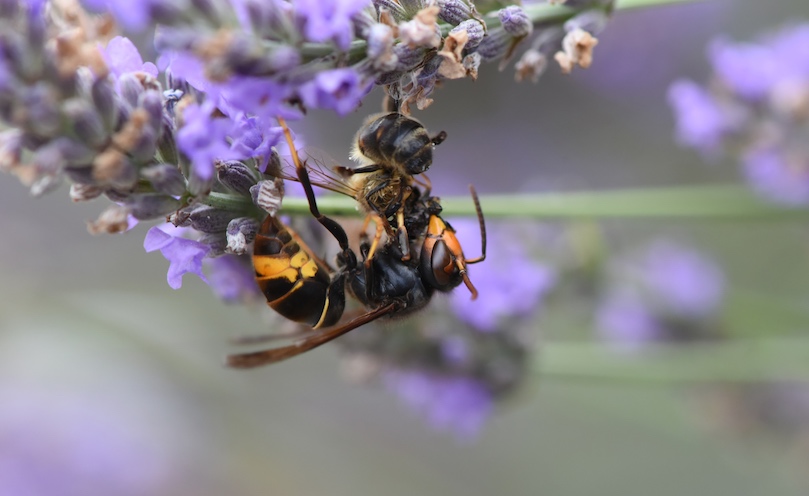
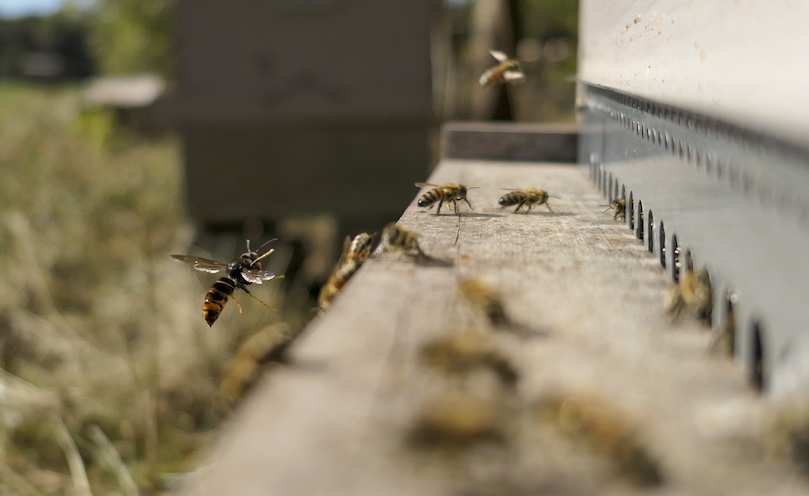
Impact on bee colonies
The Asian hornet hovers around the hive’s entrance, watching for bees, causing major stress for the colonies.
The inability of bees to forage freely due to the havoc caused by the hornet, leads to starvation of the bees, subsequently causing their death. In addition to bees, this hornet attacks a huge variety of insects, posing a major threat to biodiversity.
How to fight Asian hornets?
Currently, these countries have two main control solutions: nest destruction and hornet trapping (spring trapping for foundresses, summer trapping for workers, and autumn trapping for breeders).
These two strategies do not allow the eradication of the hornet. But they contribute to slowing down the propagation and the impact on the hives. Beekeepers also use alternative solutions, such as electric rackets and hive shields).
Today, the main challenge for research is to identify a trapping solution that is both effective and selective. One of the challenge is obviously to limit the impact of trapping on biodiversity.
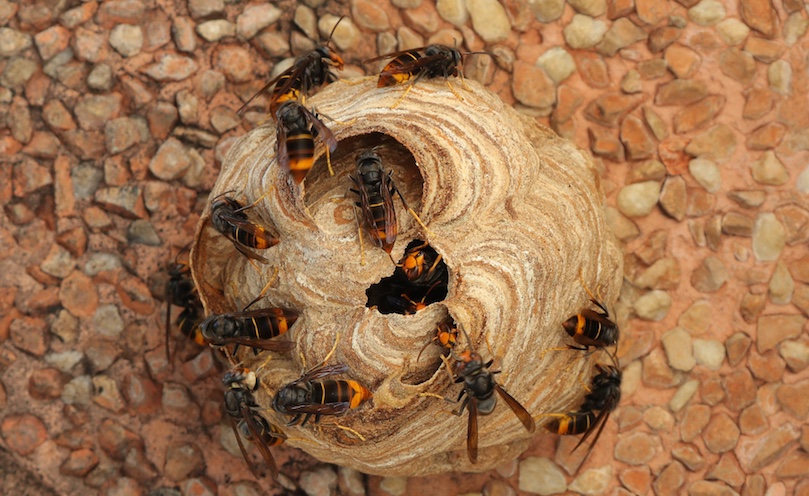

Selective trap for Asian hornet shows promising results
Selective trap for Asian hornet control by Véto-pharma—eco-friendly, affordable, and effective in protecting biodiversity and beekeeping.

Vespa orientalis, a new threat to honey bee colonies?
Lean more on the oriental hornet (Vespa orientalis), a potential new threat to honey bee colonies in Europe.

VespaCatch Select: New Selective Trap for the Asian Hornet
VespaCatch Select is a new selective and innovative trap against the Asian hornet. It allows small insects to escape and can adapt to several species of hornets.

Hive Under Siege: The Growing Threat of Hornets to Bee Colonies
Discover the threat posed by hornets for the crucial pollinators. Enter into their life cycle and roles on ecology and biodiversity.
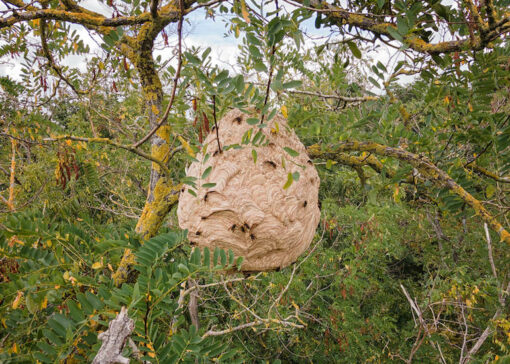
Spot, Approach, Destroy: Dealing with Yellow-legged hornet Nests
Learn the best techniques to spot, approach, and safely destroy the nests of the invasive Yellow-legged hornet
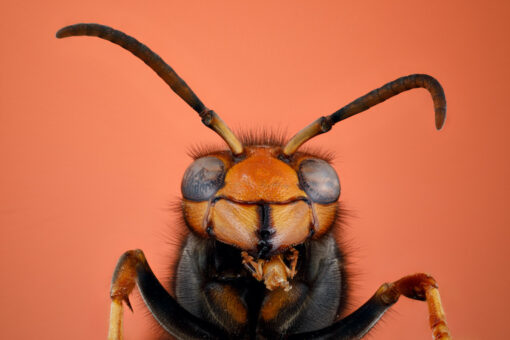
Guardians of the Apiary: Trapping the Yellow-legged Hornet Effectively
Yellow-legged hornets (Vespa velutina, also called “Asian hornets” in Europe) pose a significant threat to honeybees, feeding on them voraciously. But beekeepers, fear not!
FRE-23-EX-N01-01/22
